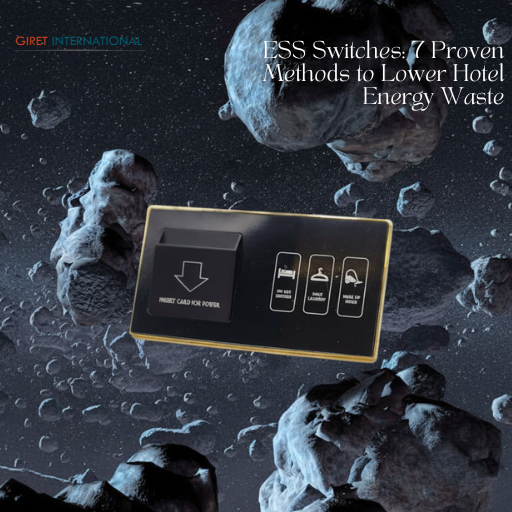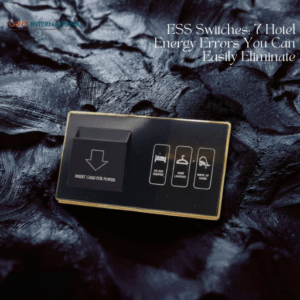ESS switches have become one of the most strategic upgrades for hotels attempting to minimize electricity waste, stabilize energy behavior, and build a more sustainable operational model. As global hospitality transitions toward greener systems, modern properties are seeking tools that automate consumption without disrupting guest comfort. ESS switches deliver exactly that creating occupancy-based power patterns that turn ordinary rooms into highly efficient, intelligent spaces.
For hotels struggling with rising electricity bills, frequent power misuse, or unpredictable guest behavior, ESS-based automation provides measurable improvement from day one. The system ensures that light circuits, HVAC units, and appliance points activate only when needed. This turns random energy usage into a controlled, purposeful process something every eco-oriented hotel needs.

For additional green-hotel strategies, explore:
➡ ESS Switches: 10 Proven Tactics for Greener Hotels
1. ESS switches and the Modern Energy Challenge
Electricity waste in hotels is unavoidable without automation. Guests frequently leave lights on, keep chargers plugged in, or run air-conditioning even when leaving the room temporarily. Over time, this behavior increases utility bills, affects equipment lifespan, and generates unnecessary carbon emissions.
ESS switches solve this by enabling occupancy-based control. When a guest inserts their RFID card, power activates. When they remove it, the room shuts down after a pre-configured delay. This simple behavior has a deep impact eliminating idle consumption across lights, HVAC systems, and appliances.
Energy waste is not always deliberate; it often comes from guest habits, cultural differences, or lack of awareness. Automated systems ensure efficiency without relying on guests or staff.
For more insights on reducing waste, read:
➡ ESS Switches: 7 Smart Ways to Reduce Hotel Power Waste
2. ESS switches and Automated Room Logic
Manual supervision of energy usage is impossible in a hotel environment. Staff cannot enter every room after every guest exit. This is where automated logic systems take over. By integrating ESS switches into room panels, a hotel ensures that power flows only when occupancy is confirmed.

Automation delivers:
- Consistent energy behavior
- Fewer electrical anomalies
- Lower risk of circuit overload
- Stabilized monthly energy patterns
- Controlled use of sockets and lighting
Predictability is essential for both sustainability and budgeting. Hotels can confidently forecast their energy needs when usage aligns strictly with room occupancy.
To learn more about energy upgrades, check:
➡ ESS Switches: 9 Critical Upgrades for Hotel Efficiency
3. ESS switches for Smarter HVAC Performance
HVAC consumption is the single largest component of hotel energy expenses. In warm or humid climates, AC misuse contributes up to 60% of a room’s total electricity draw. When guests leave rooms without turning off cooling, the system suffers excessive load and unnecessary wear.
ESS-based HVAC control activates cooling only during occupancy. ESS switches ensure AC units shut down safely when guests leave and resume operation when they return.
Benefits include:
- 25–40% HVAC energy savings
- Longer compressor life
- Reduced overheating
- Lower maintenance costs
- Improved efficiency of copper coils
For modern eco-hotels, HVAC automation is one of the highest-return investments.
For greener hotel-building steps, explore:
➡ ESS Switches: 10 Essential Steps to Build Greener Hotels
4. ESS switches for Appliance & Lighting Control
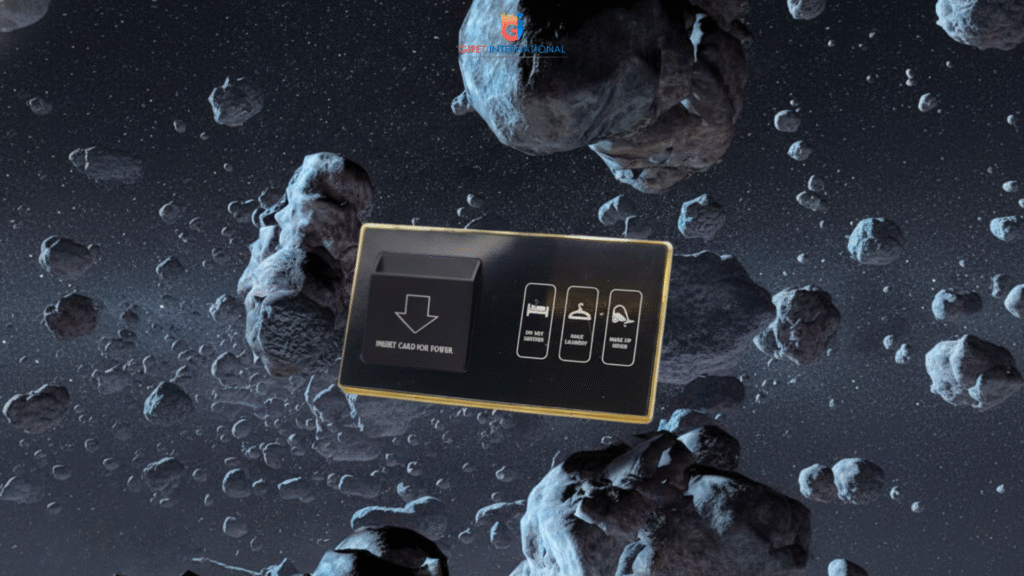
Guest rooms contain multiple lighting layers reading lights, bathroom fixtures, mirror lights, ambience lamps and guests rarely switch them off consistently. Appliances such as kettles, irons, chargers, and minibars create phantom load as they continue drawing energy even when unused.
ESS switches eliminate all unintentional energy draw. Once a guest exits the room, lights shut off, appliances receive zero power, and circuits are reset to a safe and efficient state.
This ensures:
- Zero phantom load
- Reduced fire risks from overheated appliances
- Lower power leaks
- Safer guest-room environment
Hotel engineers frequently report fewer appliance failures after ESS integration since systems no longer run unattended.
For solutions to eliminate power loss issues:
➡ ESS Switches: 6 Smart Fixes for Costly Hotel Power Losses
5. ESS switches Boosting Operational Efficiency
Efficiency is not limited to electricity it includes staff time, equipment lifespan, and maintenance workload. ESS automation helps hotels streamline operations by providing consistent and predictable room behaviour.
With ESS switches, engineers and housekeeping teams no longer encounter rooms with overheated appliances, forgotten lights, or unstable electrical conditions. Every room resets to a safe baseline after guest departure.

Operational advantages include:
- Reduced engineering interventions
- Lower circuit trips
- Predictable maintenance cycles
- Safer housekeeping entry
- Faster room turnaround
Hotels with high occupancy rates benefit especially from streamlined operations.
6. ESS switches Enhancing Guest Comfort & Experience
Guests want comfort, convenience, and a seamlessly managed stay. Intelligent electrical systems elevate the guest experience by delivering stable, consistent energy performance without manual adjustment.
ESS automation allows guests to enjoy lighting and cooling comfortably while ensuring energy is used responsibly. ESS switches create a balanced environment where comfort meets sustainability.
Guest benefits include:
- Stable room temperature
- Reliable lighting
- Fewer electrical faults
- Safer appliance functionality
- Noise-free system operation
Eco-conscious travellers appreciate hotels that actively reduce energy waste improving guest satisfaction and ratings.
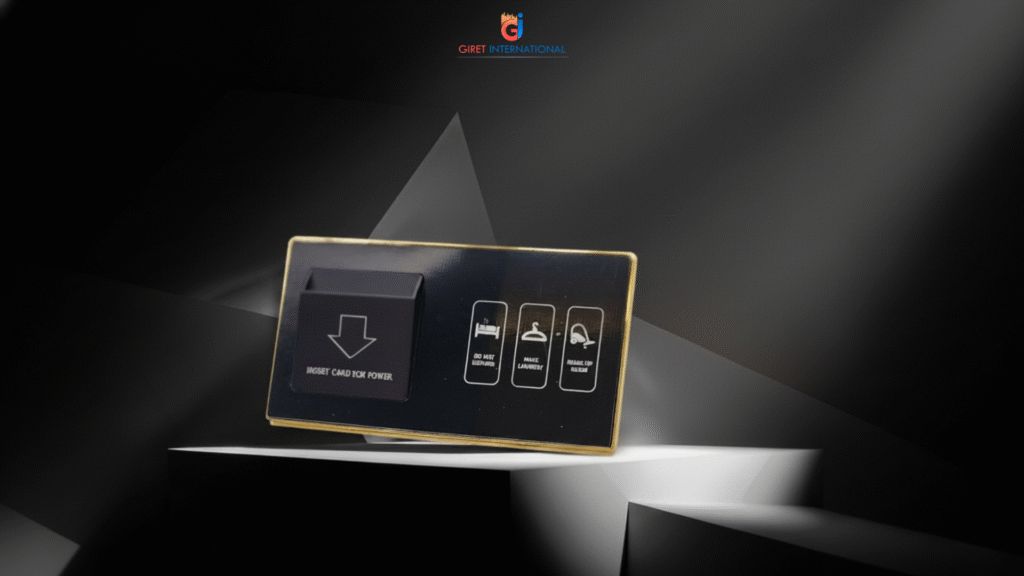
For safety enhancements, explore:
➡ ESS Switches: 11 Powerful Ways to Upgrade Hotel Safety
7. ESS switches Improving Safety & Compliance
Safety is one of the most overlooked advantages of energy automation. Excessive load on circuits, overheated appliances, and continuous current flow create hidden fire risks. When rooms power down automatically, these risks are dramatically reduced.
ESS switches support compliance with electrical safety standards while minimizing load spikes, overheating, and unintended appliance activation.
Safety advantages include:
- Stabilized circuits
- Reduced overheating
- Lower fire hazards
- Controlled appliance usage
- Safer electrical rooms
Compliance teams appreciate automated systems because they produce consistent, measurable results critical during audits.
8. Additional Sustainability Benefits Enabled by Automation

Once predictable energy patterns are established, hotels can adopt additional eco-friendly solutions:
- Integration with solar systems
- Energy-monitoring dashboards
- Smart corridor lighting
- AI-driven load forecasting
- Generator optimization
ESS switches provide the foundation required for wider sustainability initiatives across properties.
9. Choosing the Right ESS Model
Hotels should evaluate ESS systems using criteria such as:
- Panel durability
- RFID compatibility
- Glass vs. polycarbonate design
- Timer accuracy
- Heat resistance
- Brand reliability
Premium-grade models ensure long-term performance and smoother sustainability tracking.
10. Installation Practices for Maximum Efficiency
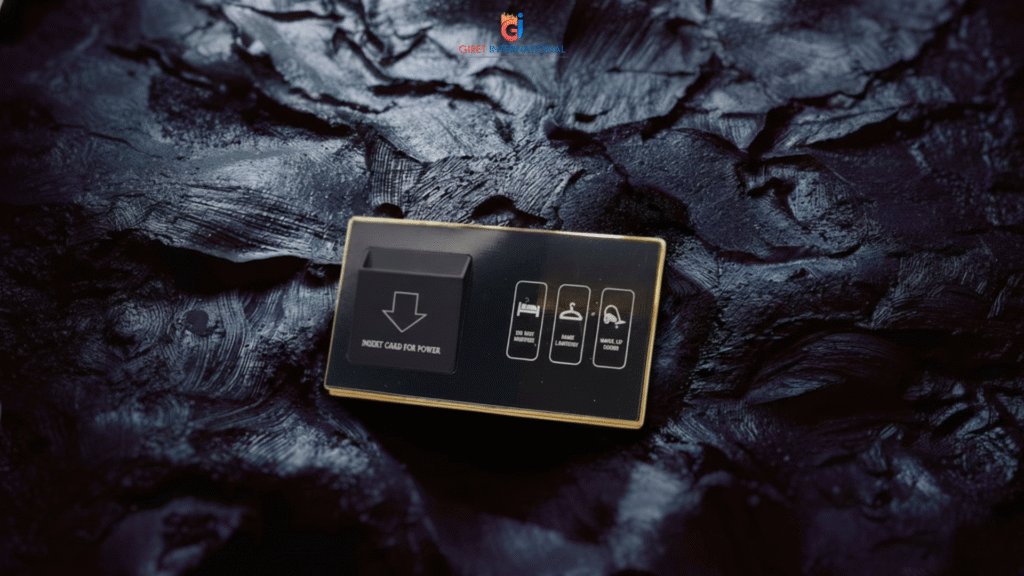
Installation quality determines how effectively automation performs. Hotels must ensure:
- Correct phase-neutral mapping
- Strong mounting boxes
- Safe wiring
- Proper breaker configuration
- Delay calibration
- RFID response testing
Without proper installation, even advanced systems underperform.
11. Real-World Hotel Results
Urban Luxury Hotel
Cut HVAC wastage by 38%, reducing monthly energy bills significantly.
Coastal Eco-Resort
Minimized phantom load and improved compressor lifespan.
Boutique City Property
Stabilized electrical systems across old wiring infrastructure.
Multi-Property Hospitality Group
Standardized ESS adoption resulted in consistent energy savings across all branches.
12. Conclusion

ESS-based automation is not merely an upgrade it is a necessity for eco-focused hotels aiming to operate efficiently, safely, and responsibly. By aligning energy consumption with occupancy, ESS switches help hotels reduce waste, protect equipment, and elevate operational standards.
Modern hospitality demands automation, and properties that adopt intelligent systems today will lead the sustainability movement of tomorrow.
➡ About Giret International
➡ Contact Us
➡ Hospitality Products
Instagram | Facebook | Pinterest | YouTube | X (Twitter)

